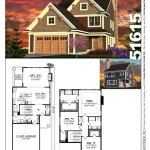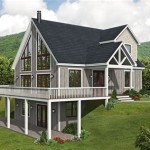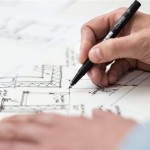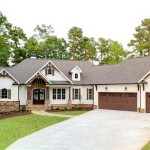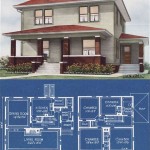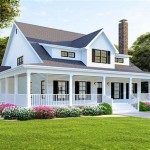```html
House Plans for Luxury Homes: A Comprehensive Guide
Luxury home design transcends basic shelter; it represents a fusion of architectural innovation, bespoke detailing, and a deep understanding of the homeowner's lifestyle. House plans for luxury homes serve as the foundational blueprint for realizing these aspirations, meticulously outlining every aspect of the structure, from its spatial organization and material selection to its technological integration and aesthetic presentation. These plans are significantly more complex than those for standard residences, demanding the expertise of seasoned architects and designers capable of translating sophisticated visions into tangible realities.
The development of house plans for luxury homes involves a comprehensive process, beginning with extensive consultations between the architect and the client. This initial phase focuses on defining the client's needs, preferences, and aspirations for the home. This includes discussing the desired style (e.g., modern, traditional, contemporary), the required number of rooms and their intended functions, specific features like home theaters or wine cellars, and the overall aesthetic vision for both the interior and exterior spaces. Site analysis is also crucial, considering factors like topography, orientation, and existing vegetation to maximize natural light, views, and privacy.
Following the initial consultations, the architect develops preliminary schematic designs, offering different spatial configurations and architectural approaches. These designs are presented to the client for feedback and refinement, leading to an iterative process that gradually narrows down the options and refines the overall design concept. This stage also includes preliminary cost estimations to ensure that the design remains within the client's budget.
Once a schematic design is approved, the architect proceeds to develop detailed construction documents. These documents include comprehensive floor plans, elevations, sections, and detailed drawings of all building components. They specify the materials to be used, the dimensions of all elements, and the precise locations of all fixtures and equipment. They also include structural, mechanical, electrical, and plumbing (MEP) plans, detailing the intricate systems that operate within the home. The construction documents are essential for obtaining building permits and for guiding the construction process.
Key Considerations in Luxury Home Design
Several key considerations are paramount in the design of luxury homes. These extend beyond basic functionality and encompass aspects that enhance the living experience and contribute to the overall value of the property.
Spatial Planning and Flow: Luxury homes prioritize spaciousness and seamless flow between different areas. Open floor plans are often employed to create a sense of grandeur and to facilitate social interaction. However, strategic zoning is also crucial to ensure privacy and separation between different functions. The master suite, for example, is typically designed as a private sanctuary, separated from the more public areas of the home. Circulation patterns are carefully considered to minimize congestion and to create a smooth, intuitive flow throughout the house. High ceilings and large windows are often incorporated to maximize natural light and create a sense of airiness.
Materiality and Finishes: The selection of materials and finishes is a critical aspect of luxury home design. High-quality materials such as natural stone, exotic hardwoods, and custom-made cabinetry are often used to create a sense of opulence and sophistication. Attention to detail is paramount, with meticulous craftsmanship evident in every aspect of the construction. Custom millwork, intricate moldings, and hand-laid tilework are common features. Smart home technology is seamlessly integrated into the design, offering enhanced control over lighting, climate, and security systems. Sustainable materials and energy-efficient technologies are also increasingly incorporated to minimize the environmental impact of the home.
Integration of Indoor and Outdoor Spaces: Luxury homes often blur the lines between indoor and outdoor living, creating seamless transitions that enhance the enjoyment of the property. Large sliding glass doors, expansive terraces, and outdoor kitchens are common features. Swimming pools, spas, and meticulously landscaped gardens are often integrated into the overall design, creating a private oasis for relaxation and entertainment. Outdoor living spaces are designed to be extensions of the interior, offering comfortable seating areas, dining spaces, and outdoor fireplaces. The integration of indoor and outdoor spaces maximizes the use of the property and creates a sense of connection with nature.
Elements of a Luxury Home Plan
A luxury home plan is a complex set of documents that goes far beyond simple floor plans. It is a comprehensive guide for the entire construction process.
Detailed Floor Plans: These plans illustrate the precise layout of each room, including the dimensions, locations of doors and windows, and placement of fixtures and appliances. They also indicate the types of flooring, wall finishes, and ceiling treatments to be used. In luxury homes, these plans often include detailed sections showing custom millwork and built-in cabinetry.
Elevations: Elevations are drawings that show the exterior appearance of the home from different viewpoints. They illustrate the architectural style, the types of materials used on the exterior, and the placement of windows and doors. Luxury home elevations often incorporate intricate detailing, such as decorative trim, custom moldings, and elaborate roofing systems.
Sections: Sections are drawings that cut through the home vertically, revealing the interior construction details. They show the relationship between different floors, the height of ceilings, and the construction of walls and roofs. Sections are essential for understanding the structural integrity of the home and for ensuring that all building components are properly integrated.
MEP (Mechanical, Electrical, and Plumbing) Plans: These plans detail the locations of all mechanical equipment, electrical wiring, and plumbing lines within the home. They specify the types of equipment to be used, the sizes of pipes and wires, and the locations of outlets, switches, and fixtures. MEP plans are crucial for ensuring that the home's systems operate efficiently and safely.
Structural Plans: Structural plans are engineered drawings that detail the construction of the home's foundation, walls, and roof. They specify the types of materials to be used, the sizes of beams and columns, and the connections between different structural elements. Structural plans are essential for ensuring the stability and durability of the home.
The Role of Technology in Luxury Home Design
Technology plays an increasingly important role in the design and construction of luxury homes. From sophisticated design software to smart home automation systems, technology is transforming the way these homes are conceived, built, and operated.
CAD and BIM Software: Computer-aided design (CAD) and building information modeling (BIM) software are essential tools for architects and designers. These programs allow them to create detailed 3D models of the home, visualize the design from different perspectives, and identify potential problems before construction begins. BIM software also facilitates collaboration between different members of the design team, ensuring that all aspects of the project are properly coordinated.
Smart Home Automation: Smart home automation systems are increasingly integrated into luxury homes, offering enhanced control over lighting, climate, security, and entertainment systems. These systems can be controlled remotely via smartphones or tablets, allowing homeowners to manage their homes from anywhere in the world. Smart home technology can also improve energy efficiency by automatically adjusting lighting and climate settings based on occupancy and environmental conditions.
Virtual Reality (VR) and Augmented Reality (AR): VR and AR technologies are transforming the way homeowners experience the design process. VR allows homeowners to immerse themselves in a virtual model of their future home, experiencing the space and making design decisions before construction begins. AR allows homeowners to overlay digital information onto the real world, visualizing how furniture and finishes will look in their existing home.
The creation of house plans for luxury homes is a complex and multifaceted process that requires a high level of expertise and attention to detail. By carefully considering the key considerations outlined above and leveraging the power of technology, architects and designers can create truly exceptional homes that meet the unique needs and aspirations of their clients.
```
Large Luxury Home Plans With S Houseplans Blog Com

House Plan 1018 00199 Florida 10 178 Square Feet 6 Bedrooms 8 Bathrooms Mansion Floor Luxury Plans Mediterranean Homes

Lochinvar House Plan Mansion Floor Luxury Plans Blueprints

Small Luxury House Plans Houseplans Blog Com

8 Small Luxury House Plans We Love Blog Eplans Com

Luxury Home Floor Plans House Mansion Plan

Large Luxury Home Plans With S Houseplans Blog Com

Luxury House Plans Build Your Dream Home

Marvelous Mansion Home Plans 1 Luxury Floor Plan House Dream

Elegant And Functional Luxury House Plans Houseplans Blog Com


